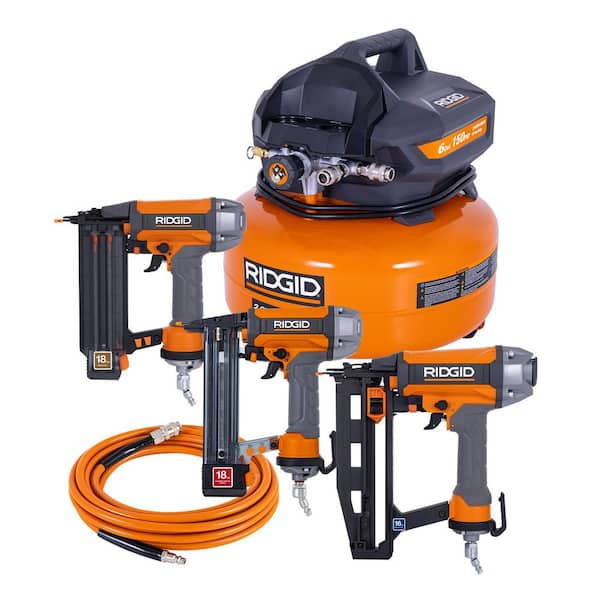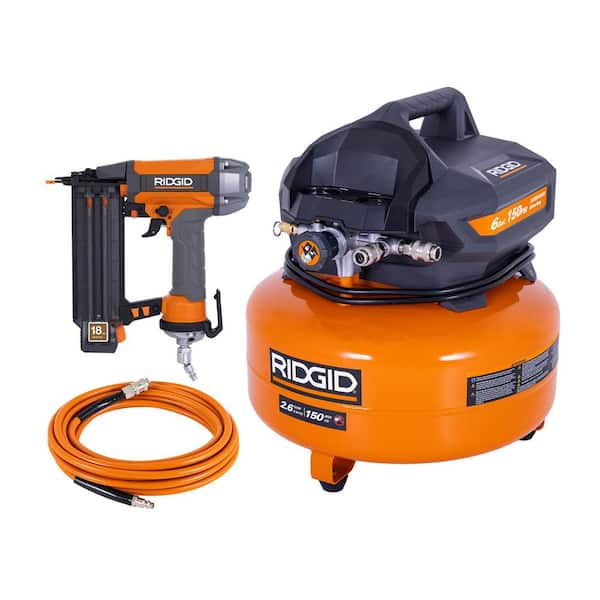If you work with air compressors, you know how important it is to have the right hose. A 25 foot air compressor hose gives you the perfect balance of reach and control.
Whether you’re tackling a big project or just need a reliable tool for everyday use, this hose can make your job easier and faster. You’ll discover why choosing the right hose matters, what features to look for, and how a 25 foot length can boost your efficiency.
Keep reading to find out how this simple upgrade can transform the way you work.
Choosing The Right Hose Material
Choosing the right hose material for a 25 foot air compressor hose is very important. The material affects the hose’s durability, flexibility, and safety. Picking the correct material ensures the hose lasts longer and works well in your tasks. It also helps prevent leaks and damage.
Many hoses come in different materials, each with its own strengths and weaknesses. Understanding these differences makes it easier to choose the best hose for your needs.
Rubber Vs Pvc Hoses
Rubber hoses are strong and flexible. They work well in cold and hot temperatures. Rubber resists abrasion and rough handling. It also does not crack easily. These hoses are heavier but last longer.
PVC hoses are light and easy to carry. They are less flexible than rubber but cost less. PVC works well for light tasks and dry conditions. It can crack if bent sharply or used in cold weather.
Benefits Of Hybrid Materials
Hybrid hoses combine rubber and PVC features. They offer good flexibility and strength. These hoses are lighter than rubber but stronger than pure PVC. Hybrid materials resist kinks and wear better. They are a good choice for mixed-use and changing conditions.
Hose Diameter And Its Impact
The diameter of a 25 foot air compressor hose plays a key role in its performance. It affects how air moves through the hose. The size can change the pressure and flow rate. Choosing the right diameter helps tools work properly. It also avoids loss of power and efficiency.
Common Diameter Sizes
Air compressor hoses come in various diameters. The most common sizes are 1/4 inch, 3/8 inch, and 1/2 inch. Smaller diameters suit light tasks and small tools. Larger diameters fit heavy-duty tools and longer distances. Picking the correct size depends on the tool and job needs.
Effect On Airflow And Pressure
A smaller diameter limits airflow and reduces pressure. This can make tools weaker or slower. A larger diameter allows more air to pass with less pressure drop. It keeps tools running strong and steady. The right diameter balances hose weight and performance for best results.
Length Considerations For Efficiency
Choosing the right length for an air compressor hose affects how well your tools work. A hose that is too short limits your movement. A hose that is too long can reduce air pressure. Understanding length helps you pick the best hose for your tasks. Efficiency depends on balancing distance and air flow.
Why 25 Feet?
A 25-foot hose offers a good balance. It gives enough reach for many jobs. You can move around a work area without moving the compressor. This length suits both small and medium projects well. It is not too heavy or hard to store.
Balancing Length And Performance
Longer hoses cause air pressure to drop. This means tools may lose power. Short hoses keep pressure strong but limit your range. A 25-foot hose helps avoid big pressure drops. It keeps your tools running smoothly while giving enough freedom to work.
Fittings And Connectors
Fittings and connectors are key parts of a 25 foot air compressor hose. They join the hose to the compressor and tools. Good fittings keep air flowing without leaks. They also make it easy to attach and remove the hose. Choosing the right fittings helps the hose work better and last longer.
Strong and tight connections prevent air loss. This saves energy and keeps tools running smoothly. Knowing about different fittings makes it easier to pick the right one for your needs.
Types Of Couplers
Couplers connect the hose to tools and the compressor. The most common types are quick-connect and threaded couplers. Quick-connect couplers snap on and off fast. They save time during work. Threaded couplers screw on tightly. They hold better under high pressure.
Some couplers use universal designs to fit many tools. Others fit only specific brands. Knowing the types helps find the best fit. It also keeps the air flow steady.
Ensuring Leak-free Connections
Leaks waste air and reduce power. Tight fittings and good connectors stop leaks. Use thread seal tape on threaded parts. This fills gaps and blocks air escape. Check couplers regularly for wear or damage.
Replace old or broken connectors quickly. Keep fittings clean from dirt and dust. This keeps seals tight and connections strong. Leak-free fittings make the hose safe and efficient.
Maintaining Your Air Compressor Hose
Keeping your 25 foot air compressor hose in good shape helps it last longer. Proper care stops leaks and damage. A well-maintained hose works better and keeps air flowing smoothly.
Simple steps can protect your hose from wear and tear. Regular cleaning and smart storage play big roles. These habits save you money and time on repairs.
Cleaning Tips
Clean the hose after each use. Wipe it with a damp cloth to remove dirt and dust. Avoid harsh chemicals that can weaken the hose material. Check for oil or grease and clean gently. Let the hose dry fully before storing. Dirt and moisture cause damage over time.
Storage Best Practices
Store the hose in a cool, dry place away from sunlight. Avoid sharp bends or kinks when coiling the hose. Use a hose reel or hanger to keep it neat. Keep it off rough surfaces to prevent cuts. Proper storage stops cracks and keeps the hose flexible.

Credit: www.homedepot.com
Common Issues And Troubleshooting
Using a 25 foot air compressor hose can bring many benefits to your work. Problems can still happen. Knowing common issues helps fix them fast. This saves time and keeps tools working well. Below are typical problems and how to handle them.
Kinks And Cracks
Kinks stop air flow. They happen if the hose bends too much. Kinks can damage the hose over time. Cracks may form from old age or rough use. Both cause leaks and reduce pressure. Check the hose often for bends or splits. Straighten kinks gently and avoid sharp bends. Replace the hose if cracks appear to keep safe air flow.
Pressure Drops
Pressure drops lower tool performance. Air leaks in the hose cause this. Worn-out fittings or loose connections also reduce pressure. Dirt inside the hose can block air flow. Test for leaks by listening or feeling air escapes. Tighten connections and clean the hose regularly. Replace worn parts quickly to keep steady pressure.
Top Brands And Models
Choosing the right 25 foot air compressor hose means knowing the top brands and models. The market offers many options. Some fit tight budgets while others provide extra features for heavy use. Quality and durability matter most for long-lasting performance. This guide highlights trusted brands that meet different needs.
Budget-friendly Options
Hoses from brands like Goodyear and Craftsman offer good value. They use solid materials and resist kinks. These hoses work well for light to medium tasks. Their fittings are usually standard and easy to connect. Users find them reliable for home projects and occasional use. These budget choices balance price and function effectively.
Premium Choices
For frequent and tough jobs, brands such as Flexzilla and California Air Tools stand out. Their hoses feature high-quality rubber or hybrid materials. These resist wear, weather, and high pressure better. Premium hoses often have swivel couplers for easier handling. They maintain flexibility even in cold weather. Professionals prefer these models for their strength and long service life.

Credit: www.homedepot.com
Safety Tips For Using Air Compressor Hoses
Using a 25 foot air compressor hose safely is very important. This tool works under high pressure. Small mistakes can cause serious injury. Follow these safety tips to protect yourself and others.
Check your hose often. Look for cuts, cracks, or weak spots. Replace the hose if it shows damage. Always store it properly to avoid wear and tear.
Pressure Ratings
Know the maximum pressure your hose can handle. Do not exceed this limit. Too much pressure can cause the hose to burst. Use a pressure gauge to monitor the air pressure. Match the hose with your air compressor’s rating for safety.
Handling And Usage Guidelines
Keep the hose away from sharp edges and heat sources. Avoid kinking or twisting the hose. Move the hose carefully to prevent damage. Always disconnect the hose from the compressor before moving it. Wear safety glasses to protect your eyes from flying debris.

Credit: www.amazon.com
Frequently Asked Questions
What Is A 25 Foot Air Compressor Hose Used For?
A 25 foot air compressor hose connects air tools to the compressor. Its length offers flexibility and mobility. It suits various tasks like inflating tires and powering pneumatic tools efficiently.
How To Choose The Best 25 Foot Air Compressor Hose?
Choose based on material, diameter, and PSI rating. Look for durable rubber or PVC hoses. Ensure compatibility with your air compressor’s pressure and fittings for optimal performance.
Can A 25 Foot Hose Reduce Air Pressure?
Yes, longer hoses can cause slight pressure drops. Quality hoses minimize loss with proper diameter and material. A 25 foot hose balances length and pressure for most applications.
Is A 25 Foot Hose Suitable For Outdoor Use?
Yes, many 25 foot hoses are designed for outdoor use. Look for weather-resistant and durable materials to withstand outdoor conditions safely and effectively.
Conclusion
A 25-foot air compressor hose offers great reach and flexibility. It helps you work in tight or wide spaces with ease. Choosing the right hose ensures better air flow and durability. It saves time and effort during your projects. Keep your hose clean and store it properly for longer life.
A quality hose makes your air tools perform better every day. Consider your needs before picking a hose to get the best results. Simple and strong—a 25-foot hose fits many tasks well.

